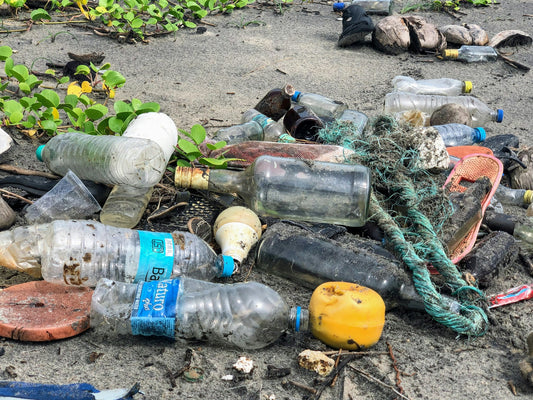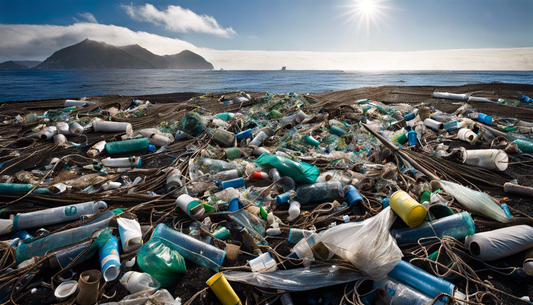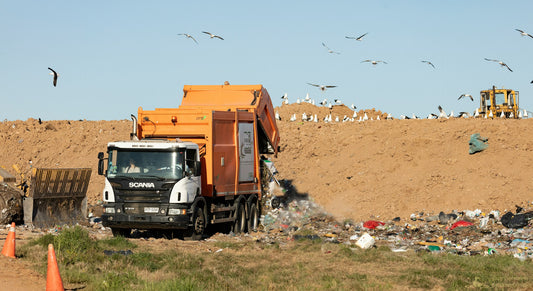Share
Hey there, urban SWOPPERS! Today, we're talking about something that's right under our noses – or should I say, right in the air we breathe? We're diving into the fascinating (and slightly unsettling) world of microplastics in urban dust.
These tiny plastic particles don’t just hang out in oceans or rivers – they’re actually floating around us in the air we breathe.
So, grab a cup of your favorite coffee, take a deep breath (literally) and let's get started on this journey to understand these tiny, invisible guests in our homes.
What Are Microplastics?
Before we dive into the urban dust scene, let's quickly define what microplastics are. These are tiny plastic particles that are less than 5 millimeters in size. They can come from various sources like broken-down plastic bags, shedded synthetic fibers from your clothes, or even the microbeads in some cosmetics.
Because these tiny particles are everywhere around us, there is a risk that we expose our bodies more and more. Recent studies actually found traces of microplastics in the human body, from the lung to the brain and even in breast milk.
Microplastics in Urban Dust

You might be surprised to know that your home, which is supposed to be your safe haven, is actually a hotspot for microplastics. Studies have shown that indoor air and dust contain higher concentrations of microplastics compared to outdoor environments.
Imagine this: every time you vacuum or dust, you're stirring up these tiny plastic particles. They come from furniture, carpets, and even your favorite cozy sweaters. These microplastics can be as small as 20 micrometers, which is tiny enough to be inhaled or ingested unintentionally.
Airborne Microplastics as Silent Threat

Inhalation is a major way we expose ourselves to microplastics. These tiny particles can travel deep into our lungs, causing potential health issues. There are a few things to consider:
Respiratory Issues: Microplastics can lead to respiratory and lung diseases, especially if you're someone who spends a lot of time indoors.
Oxidative Stress and Inflammation: Small microplastics (less than 20 micrometers) can cause oxidative stress and inflammation in the body. This can affect various systems, including your immune, nervous, and reproductive systems.
Toxic Chemicals: Microplastics can carry toxic chemicals like heavy metals, plasticizers, and other pollutants. When inhaled or ingested, these can have serious health implications, including cancer and reproductive system disorders.
How to Minimize Exposure to Microplastics Dust
Now that we know the risks, let's talk about some simple ways to reduce your exposure to microplastics in urban dust:
1. Dust Smartly
When dusting, use a damp cloth instead of a dry one. This helps trap the microplastics instead of just moving them around.
2. Vacuum with Care
Use a vacuum cleaner with a HEPA filter. These filters are superheroes when it comes to capturing tiny particles, including microplastics.
3. Choose Natural Fibers
Opt for clothes and furniture made from natural fibers like cotton, wool, or silk. These produce fewer microplastics compared to synthetic materials.
4. Air Purifiers to the Rescue
Consider investing in an air purifier. These devices can help clean the air in your home, reducing the amount of airborne microplastics you inhale.
5. Stay Informed, Stay Active
Keep up with the latest research and guidelines on microplastics. The more you know, the better equipped you'll be to protect yourself and your family.
6. A Breath of Fresh Air
Don't be a couch potato and spend time outside in nature. Not only do you reduce the exposure to microplastics dust, it is also great for your general health and well being.
A Little Healthier With Every Step
Microplastics in urban dust might seem like a daunting issue, but it's not all doom and gloom. By taking small, practical steps, you can significantly reduce your exposure to these tiny troublemakers. Remember, every little bit counts, and together we can make our homes healthier and happier places.
So, the next time you're dusting or vacuuming, just know you're not only cleaning your home but also taking care of your health. Happy cleaning, and see you in the next post!
We hope you enjoyed this article. Please feel free to leave a comment below if you want to engage in the discussion.
If you want to read more like this, make sure to check out our Blog and follow us on Instagram. If you are interested in truly sustainable products, check out our Shop.








